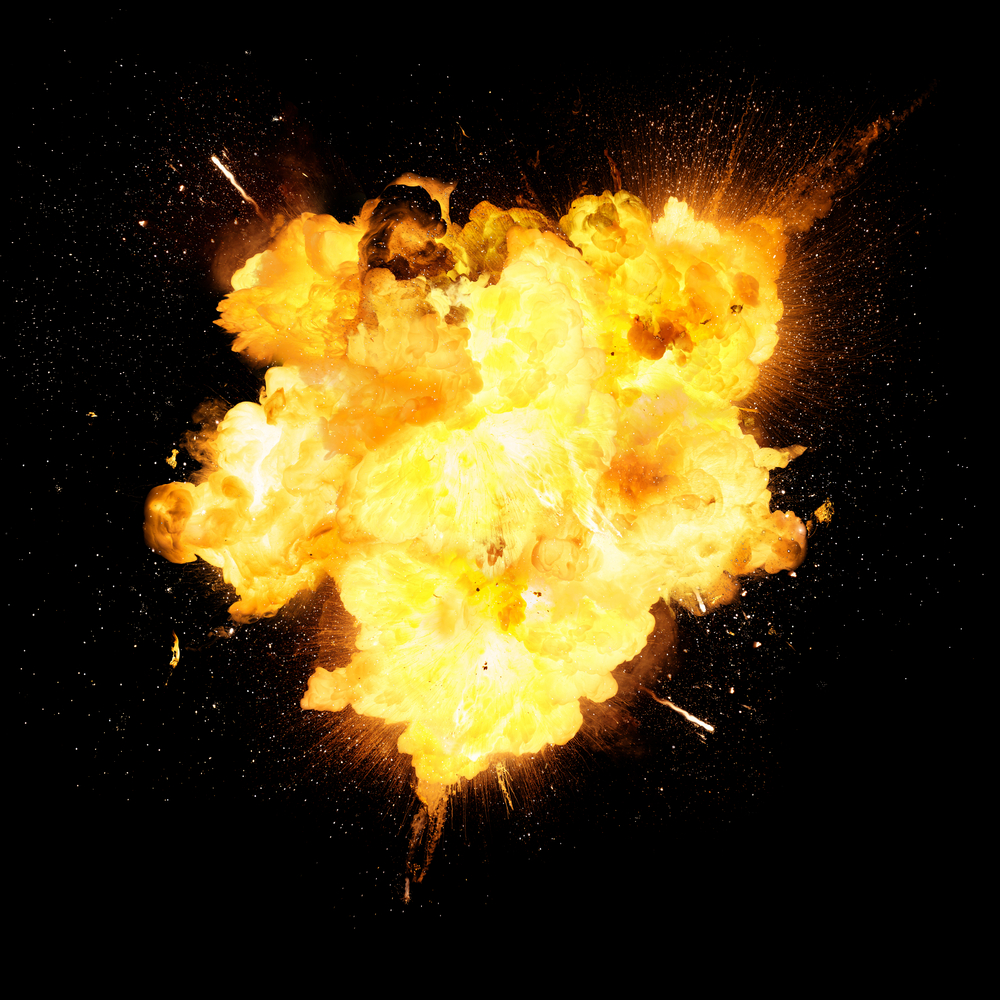Israeli forces conducted precision strikes against two significant Iranian government facilities in Tehran on Monday, targeting the infamous Evin Prison and the headquarters of the Basiji paramilitary organization. The attacks represent Israel’s direct response to an Iranian missile and drone barrage aimed at Israeli cities following the previous day’s American strikes on Iranian nuclear facilities.
The Israeli Defense Ministry confirmed hitting multiple targets within the Iranian capital, emphasizing that the strikes were designed to punish Iranian leadership for attacking Israeli civilian areas. Surveillance footage released by Iranian media showed one strike precisely hitting the entrance gate of Evin Prison, while avoiding areas housing inmates.
Iranian judiciary officials acknowledged the prison attack but maintained that the situation remained under control. The strategic targeting of the entrance gate rather than prisoner housing areas suggests Israeli efforts to minimize civilian casualties while delivering a symbolic message about reaching Iran’s most sensitive security installations.
Evin Prison represents regime oppression symbol
Evin Prison has gained international notoriety as a symbol of Iranian government oppression, housing political prisoners and serving as a detention center for dual nationals often used as diplomatic bargaining chips. The facility contains specialized units for political prisoners and individuals with Western connections, operated directly by the Islamic Revolutionary Guard Corps under Supreme Leader Ayatollah Ali Khamenei’s authority.
The prison has faced widespread criticism for alleged torture and sexual abuse of prisoners, with particular attention during the 2009 protest movements when former inmates detailed systematic abuse by guards. These allegations have contributed to both United States and European Union sanctions targeting the facility and its operations.
The prison’s historical significance extends to the 1979 Iranian Revolution, when its storming led to the release of thousands of anti-Shah dissidents and helped fuel the revolutionary movement. Originally constructed during the Shah’s era and operated by the SAVAK secret police, the facility has maintained its role as a center for political detention across different Iranian governments.
Basiji headquarters coordinates regime suppression
The second major target, Basiji headquarters, represents the operational center for Iran’s paramilitary volunteer militia responsible for suppressing domestic opposition. The Organization for Mobilization of the Oppressed functions as the Islamic Revolutionary Guard Corps’ paramilitary wing and plays a crucial role in maintaining regime control through often violent suppression tactics.
Intelligence reports suggest the Basiji organization operates under direct supervision of Mojtaba Khamenei, the Supreme Leader’s son and potential successor. This organizational structure makes the headquarters a particularly significant target, representing both operational capabilities and symbolic leadership structures within Iran’s security apparatus.
The combined targeting of both Evin Prison and Basiji headquarters indicates Israeli strategy focused on Iran’s domestic suppression infrastructure rather than military installations. This approach sends clear messages about Israel’s ability to strike sensitive regime facilities while potentially encouraging Iranian domestic opposition movements.
International community calls for de-escalation
European Union officials expressed serious concerns about escalating regional conflict, with top diplomats emphasizing the need for diplomatic solutions to prevent further military exchanges. The EU’s foreign policy leadership highlighted particular worries about potential Iranian threats to close the Strait of Hormuz, which would severely disrupt global oil transportation.
The strikes occurred as Iranian Foreign Minister Abbas Araghchi conducted meetings in Moscow with Russian President Vladimir Putin, demonstrating Iran’s efforts to coordinate responses with key allies. These diplomatic consultations suggest Iranian recognition of the need for measured responses that avoid triggering broader regional conflict.
International Atomic Energy Agency leadership assessed significant damage to Iranian nuclear facilities from previous American attacks, though Iranian officials claimed nuclear materials had been relocated ahead of the strikes. The agency emphasized requirements for declaring any nuclear material transfers while monitoring compliance with international safeguards agreements.
Cycle of retaliation raises regional stakes
The exchange of strikes between Israel and Iran follows a pattern of escalating retaliation that began with American attacks on Iranian nuclear sites. Iranian military leadership characterized the American strikes as sovereignty violations equivalent to invasion, while promising additional responses targeting American interests and personnel throughout the region.
The presence of tens of thousands of American troops across Middle Eastern bases within range of Iranian missiles adds complexity to potential escalation scenarios. Military analysts note that continued exchanges could draw additional regional actors into the conflict while threatening critical infrastructure including energy transportation routes.







